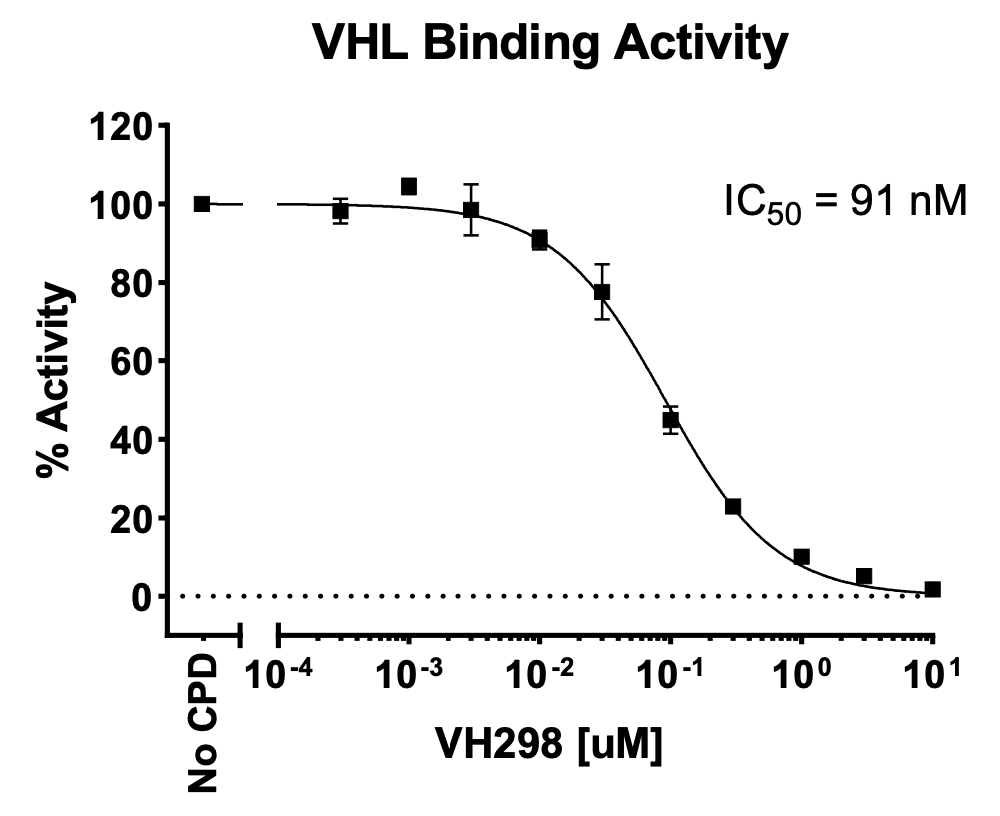
TR-FRET VHL Binding Assay Kit
Von Hippel–Lindau (VHL) is a member of an E3 ubiquitin ligase, a five-component complex including VHL, Cullin 2 (CUL2), Elongin B, Elongin C and RBX1 (RING-box protein 1). It is one of the most widely used E3 ligase recruiters in the design of PROTACs (Proteolysis-Targeting Chimeras) for targeted protein degradation (TPD) drug discovery. VHL plays a critical role in bringing the target protein and the ubiquitination machinery together for protein degradation via the proteasome.
The TR-FRET VHL Binding Assy kit is designed to measure the binding affinity of VHL and its ligand, and it includes Tag1-VHL-5C (VHL/CUL2/EloC/EloB/RBX1 complex), Terbium-labeled Anti-Tag1 antibody and fluorescent labeled VHL ligand VH032. The binding of VHL to the ligand brings Terbium (fluorescence donor) on the anti-Tag1 antibody in close proximity to the fluorophore (FL) on VH032 (fluorescent receptor), which results in fluorescence resonance energy transfer (FRET). Thus, the binding status of VHL and VH032 can be quantitively determined using HTRF signal by calculating the ratio of the emission fluorescence intensity of the acceptor (665 nm) and donor (620 nm). If an compound binds to the VHL and blocks VH032 binding, the HTRF signal will be reduced.


